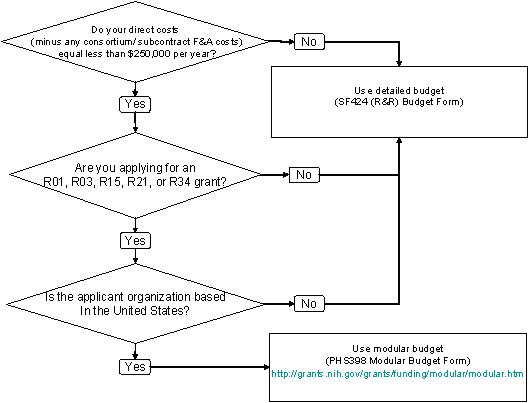4.1 NIH Budgets Overview
1. Budgets: Getting Started
Prepare your budget after the Research Plan has been completed and you have a good idea of what the costs of your project will be. Your best strategy is to request only enough money to do the work. Reviewers keep on the lookout for reasonable costs and will judge whether your request is realistic and justified by your aims and methods. Significant overestimating or underestimating suggests you don't understand the scope of the work. Reviewers will read the percentage of effort you've listed for each key person and will judge whether the figures are in sync with their expectations, based on the research proposed.
Despite popular myth, proposing cost sharing cannot be used as a factor during the merit review of a proposal unless it is both in accordance with federal awarding agency regulations and specified in the FOA. Only a few select programs require cost-sharing, and these programs will address cost sharing in the FOA.
Know your limits! Carefully read the Funding Opportunity Announcement (FOA) for budget criteria. Identify all the costs that are necessary and reasonable to complete the work described in your proposal and throughout the budgeting process, round to whole figures and use only U.S. dollars.
Ask yourself the following:
-
Is my budget realistic and appropriate for the aims and methods of my project?
-
Have I requested only enough money to do the work?
-
Have I made sure none of my requests appear to be extravagant or include resources already available to me?
-
Is the PI's salary less or equal to the current government salary cap?
-
Did I prepare a budget and use the correct form (modular or detailed)?
-
Have I followed the instructions on the modular budget format page?
-
Have I planned for the cost of the entire project?
-
Have I figured all of my costs into my budget?
-
Did I specify salaries and costs, rounded to $1,000, for consortium arrangements?
2. Modular versus Detailed Budgets
The NIH uses 2 different formats for budget submission depending on the total direct costs requested and the activity code used.
The SF424 (R&R) Application Guide includes two optional budget components—(1) R&R Budget Component requesting detailed budget information; and, (2) the “simplified” PHS398 Modular Budget Component. NIH applications will include either the R&R Budget Component or the PHS398 Modular Budget Component, but not both.
Modular budgets are applicable to certain research grant applications from domestic organizations requesting $250,000 or less per year for direct costs. Consortium/contractual F&A costs are not factored into the direct cost limit. They may be requested in addition to the $250,000 limit.
Modular budgets are simplified; therefore, detailed categorical information is not to be submitted with the application. For all modular budgets, request total direct costs (in modules of $25,000), reflecting appropriate support for the project. There will be no future year escalations.
Modular budgets are applicable only to:
- Individual Research Project Grants (R01)
- Small Grants (R03)
- Academic Research Enhancement Award (R15),
- Exploratory/Developmental Grants (R21), Research Grant (R34)
Note: AHRQ (Agency for Healthcare Research & Quality) does not accept modular budgets.
A typical modular grant application will request the same number of modules in each year. Provide an additional narrative budget justification for any variation in the number of modules requested.
NIH may request (prior to award) additional budget justification in exceptional circumstances.
If you can answer "Yes" to all the following questions, then you may be able to use a modular budget.
Decision flowchart below.


